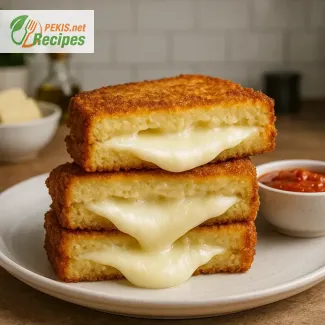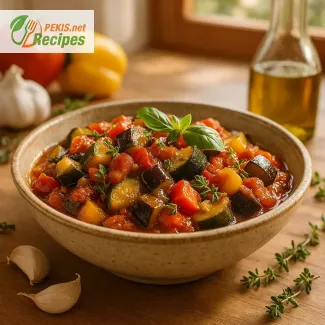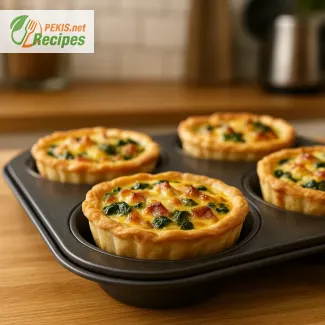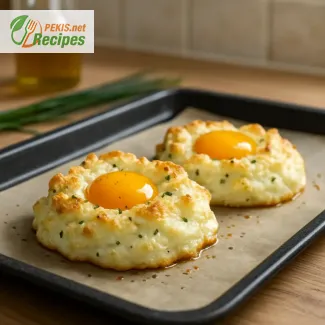
Explorando el arte del dim sum: pequeñas joyas de la cocina cantonesa
Historia, sabor y técnica en cada bocado artesanal
El dim sum no es simplemente un plato, sino una expresión culinaria que representa siglos de tradición china, especialmente del sur de China y, en particular, de la región de Cantón. Esta preparación, compuesta por pequeñas porciones de alimentos cocinados al vapor, fritos o al horno, está diseñada para ser compartida y saboreada lentamente, generalmente acompañada de una taza de té caliente en el marco del ritual del "yum cha".
El término dim sum se traduce como “tocar el corazón”, lo que refleja su propósito original: ofrecer pequeñas delicias que no sacian completamente, pero que conquistan los sentidos. Ya sea en un restaurante tradicional de Hong Kong o en la cocina de un apasionado de la gastronomía, preparar dim sum significa participar en una tradición milenaria que valora la precisión, la paciencia y el arte culinario en miniatura.
Variedad y equilibrio: la esencia del dim sum
El universo del dim sum es vasto y diverso. Se pueden encontrar más de un centenar de tipos distintos, desde los conocidos har gow (dumplings de gambas con masa de arroz) hasta los siu mai (pequeñas canastitas abiertas rellenas de cerdo y mariscos), pasando por bollitos al vapor como los char siu bao, con su inconfundible sabor a cerdo a la barbacoa chino.
La característica más fascinante del dim sum es su capacidad para combinar diferentes sabores, texturas y aromas en un solo menú. Un mismo servicio puede ofrecer preparaciones crocantes, suaves, dulces, saladas y picantes, lo que convierte la experiencia en una aventura sensorial incomparable. Cada bocado está equilibrado para que ningún ingrediente eclipse a otro, lo cual es una muestra del refinamiento técnico detrás de cada pieza.
Preparación casera: un acto de respeto y creatividad
Hacer dim sum en casa es una práctica que requiere dedicación, pero también brinda una profunda satisfacción. A diferencia de los productos industriales o precocinados, el dim sum casero permite trabajar con ingredientes frescos, personalizar los rellenos y garantizar que cada bocado refleje la calidad y el cuidado del cocinero. La masa, por ejemplo, debe tener la elasticidad justa para formar pliegues finos, sin romperse al cocerse al vapor. Esta parte del proceso es tanto técnica como estética.
El relleno puede ajustarse según el gusto del cocinero: carne de cerdo jugosa, gambas frescas, ajo, jengibre rallado, salsa de soja y aceite de sésamo son los ingredientes clásicos, pero se pueden añadir elementos como castañas de agua, brotes de bambú o incluso un toque de picante suave para realzar el sabor.
El encanto de lo tradicional en una cocina moderna
Aunque el dim sum tiene raíces tradicionales, se adapta perfectamente a la cocina contemporánea. Gracias a la accesibilidad de ingredientes internacionales, ahora es más fácil que nunca recrear esta especialidad en casa. Además, la preparación puede adaptarse a diversas preferencias dietéticas: versiones vegetarianas, sin gluten o más ligeras son totalmente posibles sin sacrificar el sabor.
Cocer al vapor en cestas de bambú aporta autenticidad, pero también se puede utilizar una vaporera de acero o silicona. Servirlos sobre hojas de col o lechuga, acompañados de salsas como una mezcla de soja, vinagre de arroz y aceite de chile, convierte la presentación en un momento digno de celebración. Incluso se pueden decorar con semillas de sésamo, cebollino fresco picado o pequeños toques de ajo frito para añadir contraste visual y aromático.
Técnica, ingredientes y sensibilidad: la clave del éxito
Más allá de la receta, lo que realmente define un buen dim sum es el cuidado con el que se elabora. La proporción del relleno, la finura de la masa, el tiempo exacto de cocción al vapor, la temperatura del agua y el sellado de los bordes son detalles fundamentales que impactan directamente en el resultado final. Una masa demasiado gruesa puede opacar el relleno, mientras que una cocción insuficiente deja una textura gomosa o masa cruda.
El equilibrio entre técnica y sensibilidad es lo que transforma un simple dumpling en un auténtico dim sum. Es, sin duda, una forma de arte en la que la tradición se encuentra con la innovación, y donde el cocinero puede expresar su pasión por la cocina a través de cada pliegue y cada relleno elegido. En el dim sum, la grandeza está en los detalles.
1. Preparar la masa:
Colocar la harina en un bol grande. Verter el agua hirviendo poco a poco, mezclando con palillos o un tenedor. Cuando la mezcla esté templada, amasar con las manos hasta obtener una masa suave. Cubrir y dejar reposar 30 minutos. Incorporar la fécula de maíz, amasar nuevamente y dejar reposar otros 10 minutos.
2. Preparar el relleno:
En un bol grande, mezclar la carne de cerdo, los camarones, la cebolleta, el ajo y el jengibre. Añadir la salsa de soja, el aceite de sésamo, el vino de Shaoxing, la sal, el azúcar y la pimienta. Mezclar bien hasta obtener una masa pegajosa. Reservar en el refrigerador.
3. Formar los discos de masa:
Dividir la masa en cuatro partes. Hacer un cilindro con cada parte y cortar en 10 piezas iguales. Formar bolas y estirar cada una en un disco de 7–8 cm (2.75–3 inch) de diámetro.
4. Rellenar y formar las empanadillas:
Colocar una cucharadita colmada de relleno en el centro de cada disco. Doblar la masa y sellar bien los bordes, haciendo pliegues si se desea.
5. Cocinar al vapor:
Forrar una vaporera de bambú con hojas de col. Colocar los dim sum dejando espacio entre ellos. Cocer al vapor sobre agua hirviendo durante 10–12 minutos hasta que estén bien cocidos y la masa sea translúcida.
6. Servir:
Servir calientes con salsa de soja, aceite de chile o una salsa de vinagre y ajo.
Dim sum con un giro moderno: secretos para una versión más saludable y creativa
Cómo transformar un clásico chino en una experiencia casera inolvidable
El dim sum tradicional ha conquistado a los amantes de la cocina de todo el mundo gracias a su equilibrio entre sabor, textura y presentación artística. Sin embargo, incluso una receta tan establecida puede ser mejorada con algunos cambios estratégicos. Adaptar ingredientes, refinar técnicas o aplicar toques contemporáneos puede elevar estas pequeñas delicias a un nivel superior, sin perder la esencia de su origen cantones.
Ajustes de ingredientes que potencian el sabor y la textura
Una de las formas más eficaces de enriquecer el sabor del dim sum es introducir ingredientes umami que refuercen la profundidad del relleno. Sustituir parcialmente la carne de cerdo por pollo picado o setas shiitake no solo aligera la receta, sino que añade matices terrosos y sabrosos. Las setas, además, aportan una jugosidad extra que contrasta muy bien con la suavidad de la masa al vapor.
Si se desea un toque más crocante, incorporar castañas de agua o bambú finamente picado crea un equilibrio interesante entre mordida y suavidad. Para un perfil de sabor más fresco, el uso de cilantro fresco, ralladura de lima o unas gotas de aceite de sésamo tostado puede aportar notas perfumadas que se combinan armónicamente con los ingredientes básicos.
Incluso añadir un poco de ajo negro o una cucharadita de miso blanco al relleno puede acentuar la profundidad sin necesidad de más sal. Estos ingredientes actúan como intensificadores naturales del sabor, transformando el resultado final sin alterar el espíritu del plato.
Por qué el dim sum hecho en casa es siempre mejor
Elaborar dim sum en casa permite controlar la calidad de los ingredientes, el contenido nutricional y, por supuesto, la técnica. A diferencia de las versiones precocinadas o congeladas, en casa puedes asegurarte de utilizar productos frescos, sin conservantes ni excesos de sodio. El resultado no solo es más sabroso, sino también más saludable y adaptado a tus preferencias.
Además, la posibilidad de personalizar la receta permite experimentar con rellenos vegetarianos, sin gluten o con sabores locales. ¿Por qué no sustituir la salsa de soja por una mezcla casera con tamari bajo en sodio, vinagre de arroz y un toque de miel? ¿O reemplazar la carne por lentejas cocidas, tofu firme o tempeh con jengibre y cebollino?
Errores comunes que debes evitar
Uno de los errores más habituales al preparar dim sum es rellenarlos en exceso. Aunque parezca tentador, demasiada cantidad de relleno dificulta el cierre de la masa y puede provocar que se rompan durante la cocción. Lo ideal es usar una cucharadita colmada, y asegurarse de dejar espacio en los bordes para sellar correctamente.
Otro fallo frecuente es no prestar atención al grosor de la masa. Una masa demasiado gruesa resulta pesada y opaca los sabores del relleno. Por el contrario, una masa muy fina puede romperse fácilmente. El equilibrio está en trabajar la masa hasta obtener una lámina de 2 mm de grosor, suficientemente resistente pero ligera.
También es crucial respetar los tiempos de reposo de la masa y del relleno. Una masa recién amasada necesita descansar para que el gluten se relaje, facilitando el formado de los discos. El relleno, por su parte, debe reposar para que los sabores se integren y la humedad se distribuya correctamente.
Alternativas más saludables y sostenibles
Para quienes buscan una opción más ligera o con restricciones alimentarias, el dim sum se presta perfectamente a versiones saludables. Utilizar harina integral, harina de arroz o incluso mezclas sin gluten permite adaptar la receta sin comprometer el resultado. El uso de aceite de coco virgen en lugar de grasa animal, o incluso la cocción en horno de vapor en vez de freír, reduce significativamente las calorías y grasas saturadas.
Rellenos basados en proteínas vegetales como las legumbres, combinadas con verduras ralladas, setas y hierbas aromáticas, dan como resultado un dim sum tan sabroso como su versión original. Además, puedes enriquecerlos con semillas de lino molidas, sésamo negro o levadura nutricional para un valor nutricional superior.
Presentación y experiencia sensorial
No debemos subestimar el poder visual del dim sum. Usar ingredientes coloridos como masa teñida con remolacha, té matcha o cúrcuma, además de ser atractivo, aporta sabor y beneficios antioxidantes. Colocar los dim sum en cestas de bambú con hojas verdes, acompañados de salsas caseras en pequeños recipientes, transforma una comida cotidiana en una experiencia especial.
Finalmente, acompañar los dim sum con té oolong, infusión de jazmín o incluso una bebida fermentada como el kombucha, realza la experiencia sensorial general. El dim sum, cuando se mejora desde el respeto por la tradición pero con creatividad e inteligencia culinaria, se convierte en una obra maestra cotidiana, equilibrada, deliciosa y versátil.
Alérgenos presentes en esta receta:
- Gluten (harina de trigo)
- Mariscos (camarones)
- Soja (salsa de soja)
- Sulfitos (vino de Shaoxing)
Consejos para reemplazar ingredientes alérgenos:
- Sin gluten: utilizar harina de arroz o mezcla sin gluten para la masa
- Sin mariscos: reemplazar los camarones por champiñones shiitake o tofu
- Sin soja: usar tamari sin soja o aminos de coco
- Sin sulfitos: sustituir el vino Shaoxing por vino blanco sin sulfitos o jugo de lima
- Vitamina B12: 1.1 µg – esencial para el sistema nervioso y formación de glóbulos rojos
- Hierro: 2.6 mg – importante para el transporte de oxígeno
- Zinc: 3.1 mg – refuerza el sistema inmunológico y la cicatrización
- Magnesio: 45 mg – contribuye a la función muscular y nerviosa
- Vitamina B6: 0.4 mg – esencial para el metabolismo y la función cerebral
- Selenio: 23 µg – protege las células del estrés oxidativo
- Vitamina E: 1.2 mg – favorece el sistema inmune y la salud de la piel
- Betacaroteno (de la cebolleta): 750 µg – apoya la salud ocular y reduce la inflamación





